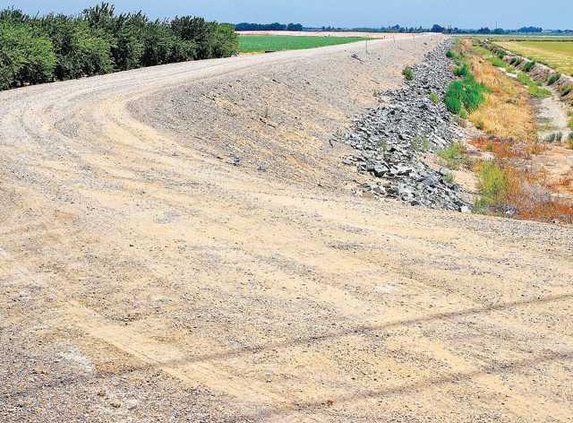For the first time since the 1980s when explosive housing development led to Manteca imposing the first growth cap in the Northern San Joaquin Valley, a city council member has voted against proceeding with an environmental impact study for more homes.
The Manteca City Council Tuesday on a 3-1 vote with Vince Hernandez dissenting and Richard Silverman absent authorized hiring DeNova Planning for $219,206 to prepare an environmental impact report regarding a proposal to build 962 more homes in southwest Manteca
That is in addition to 676 homes proposed as part of the Oakwood Trails and another 1,176 homes approved for Manteca Trails.
The new project — dubbed Oakwood Landing — will bring the number of homes developers are pursuing southwest of McKinley Avenue and the 120 Bypass on both sides of Woodward Avenue to 2,814 that could ultimately house 9,000 more residents. The projects are east and south of Oakwood Shores.
The projects have raised the ire of rural south Manteca residents who believe their lifestyle is being sacrificed to put in place the flood protection needed under state law to allow the 2,814 homes to be built in the 200-year flood plain. Actually the land in question is in the 100-year flood plain based on how the existing dry levee south of Woodward Avenue was almost breeched in 1997 prompted emergency crews to plug the McKinley Avenue underpass on the 120 Bypass to serve as a back-up emergency levee in the event the dry levee failed
Residents and farmers have argued that the levee the city is praising will ultimately increase the potential for significantly worse flood damage in future events from those whose properties end up being south of the future levee.
They also are rallying against the envisioned Raymus Expressway that would cut through their rural neighborhood. The city says it is needed to accommodate future homes yet to be built including the three above-mentioned projects.
Hernandez made it clear he wasn’t objecting to the quality of the project. Instead he is against proceeding with planning for more homes in an area where flood protection needs haven’t been determined.
The EIR study that will be funded by developers is expected to be competed in February.
Oakwood Landing consists of two subdivisions — 643 single family homes that are part of the Cierra property and 318 single family homes with general commercial and 12 acres of high density residential for the Denali property. It is located generally northwest of the new alignment of McKinley Avenue and Woodward Avenue.
Oakwood Trails is bounded on the west by the gated Oakwood Shores community, on the north by Bronzan Road, on the east by McKinley Avenue, and on the south by Woodward Avenue. It is general lyto the north and west of Oakwood Landing.
The 206-acre Oakwood Trails project will include 676 single family homes, 20 acres of commercial to take advantage of city plans to create at interchange on the 120 Bypass with McKinley Avenue as well as an 11.59-acre business park.
The city has already approved 1,176 homes for the Manteca Trails project on 477 acres south of Woodward Avenue
The advancement of the three subdivisions would significantly reduce the cost of extending sewer service to Oakwood Shores.
Oakwood Shoes homeowners have been talking off and on about annexing to the city due to a looming state deadline they have to stop using their current sewer system.
Manteca’s existing 3.9 percent growth cap is arguably the weakest of all growth caps in place within the 209. That’s because it is not only based on sewer connections awarded in a given year but it allows allocations not used to be rolled over into subsequent years.
Other cities have either a set number of additional housing units allowed in a given year or they allow a certain percentage of homes to be built based on the existing housing stock but with no rollover.
FLOOD OF NEW HOMES
Councilman balks on EIR work while colleagues forge ahead





